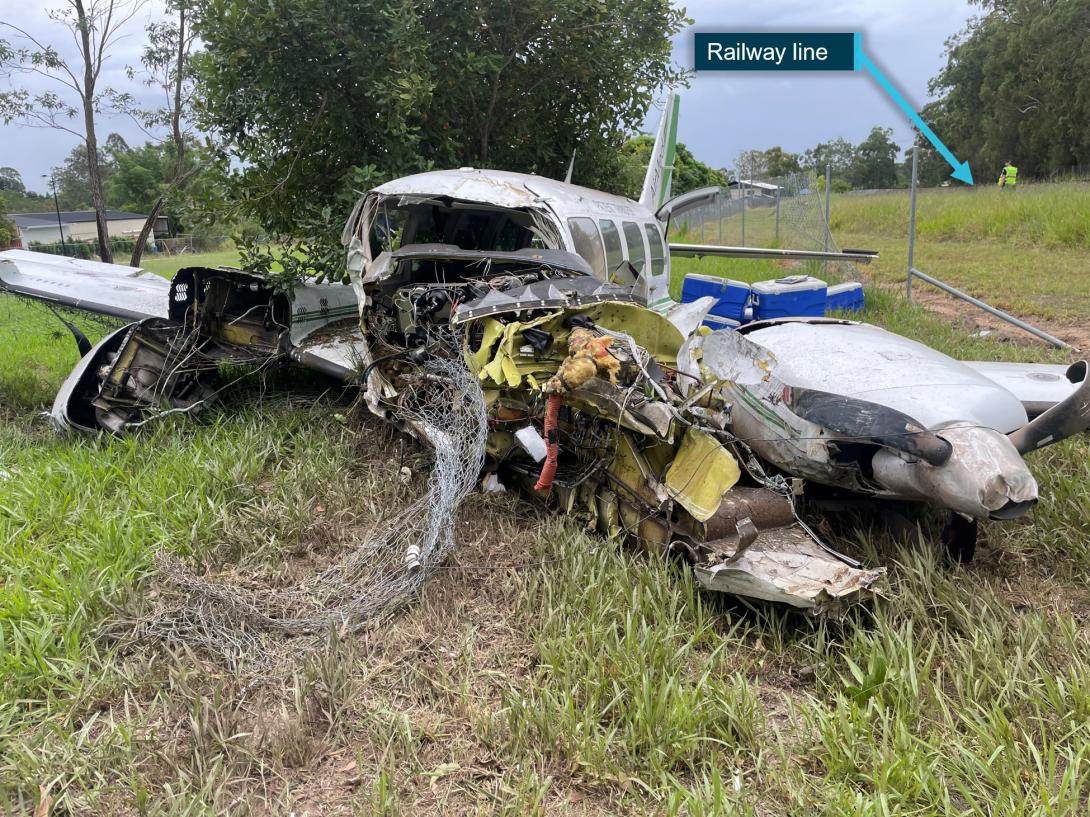
A twin-engine Piper PA-31 aircraft conducted a forced landing by a Brisbane railway line due to fuel starvation after the pilot, who was likely fatigued, misdiagnosed the loss of engine power, an ATSB investigation report has found.
The aircraft was returning to Brisbane’s Archerfield Airport, from where it had departed shortly after midnight, on the return leg of a freight charter flight to Sydney’s Bankstown Airport on the morning of 7 April 2023.
Approaching Archerfield, the pilot observed a loss of engine power from the right engine, then the left engine.
“Unable to reach Archerfield, the pilot conducted a gear-up forced landing alongside a railway line,” ATSB Director Transport Safety Dr Stuart Godley said.
The aircraft struck multiple trees and was substantially damaged, but fortunately, the pilot only received very minor injuries.
Post accident inspections found no indication of a mechanical failure that could have caused the engines to fail.
“Although the pilot reported changing from the auxiliary tanks to the main fuel tanks prior to descent, the quantity of fuel recovered from each tank after the accident, and fuel burn calculations, indicated that those selections had probably not been made and both engines lost power as a result of fuel starvation,” Dr Godley said.
The ATSB investigation report notes that the pilot misdiagnosed the loss of engine power as a partial power loss, and did not carry out the loss of engine procedure.
“Following the first power loss on the right engine, the right propeller was not feathered, resulting in excessive drag,” Dr Godley explained.
The pilot operated the return flight late at night after working in outside employment during the day. By the time of the accident, the pilot had been awake for almost 20 hours.
“A review of the pilot’s sleep history found that it is likely that the pilot was experiencing a level of fatigue shown to have an effect on performance,” Dr Godley added.
“In this case it is likely that fatigue impacted the pilot’s incorrect tank selection as well as their ability to troubleshoot the loss of power.”
Following the accident, the aircraft operator issued a notice to aircrew and conducted a review of pilot training to include the recognition and management of fuel starvation, and updated its fatigue management manual to include external employment and restrictions around hours of work and duty times.
Dr Godley said the occurrence highlights to pilots the importance of understanding their aircraft’s fuel system, and being familiar and proficient in its operation.
“During a power loss event, pilots should take the time to determine whether a total failure has transpired or if the engine is still delivering some power,” Dr Godley said.
“While this may not be clearly apparent in all configurations, the consequences of misdiagnosing a failed engine can be fatal.”
The ATSB educational publication, Starved and exhausted: Fuel management aviation accidents outlines strategies and key messages for fuel management.
In addition, Dr Godley noted improving the management of fatigue is one of the ATSB’s SafetyWatch initiatives.
“The management of fatigue is a joint responsibility between the operator and the pilot,” Dr Godley said.
“This accident also reinforces the importance of obtaining some sleep during the day prior to commencing operations at night during normal periods of sleep.”
Read the report: Fuel starvation and forced landing involving Piper PA-31-350, VH-HJE, 11 km south of Archerfield Airport, Queensland, on 7 April 2023


